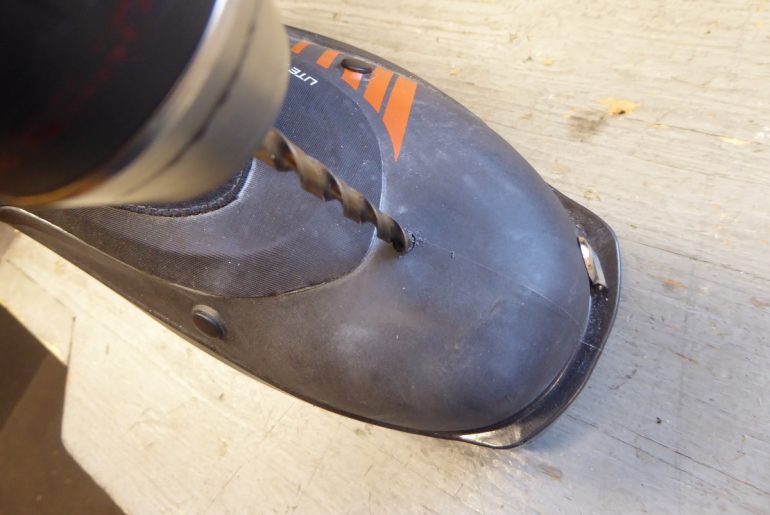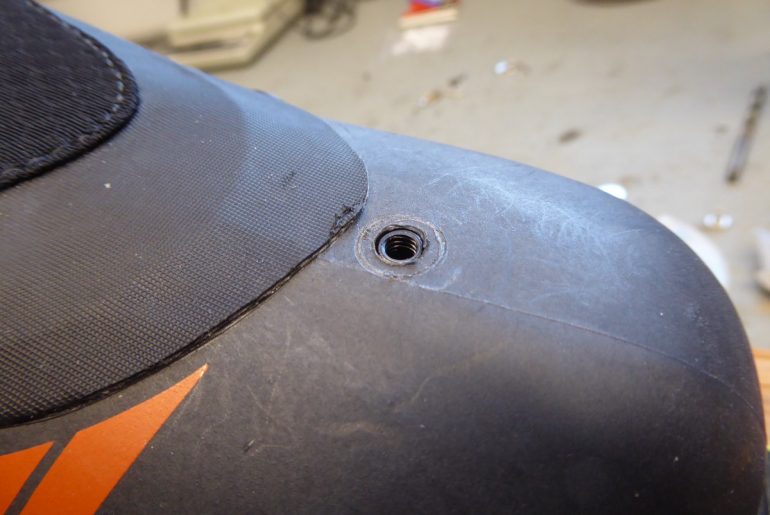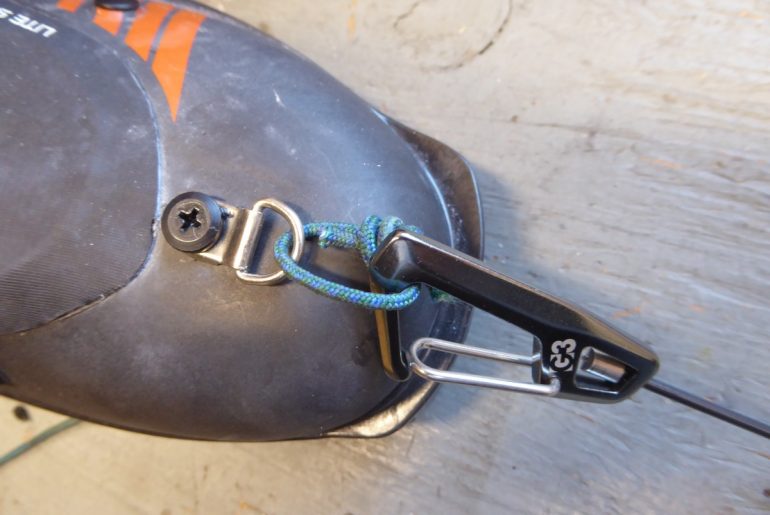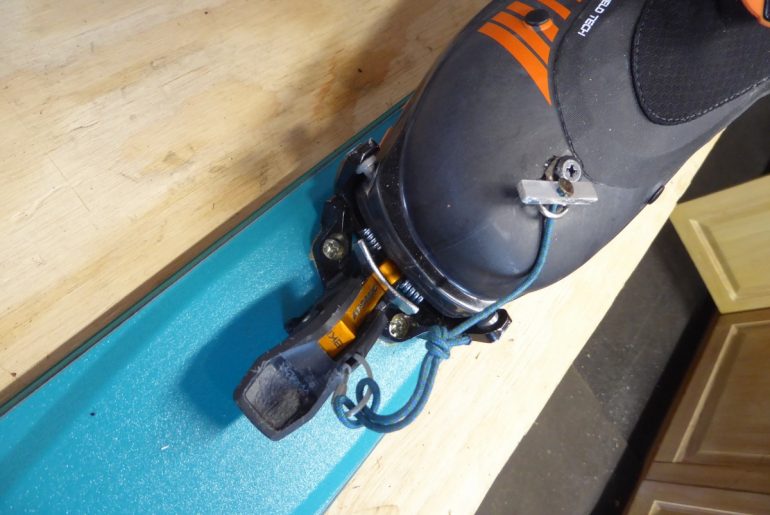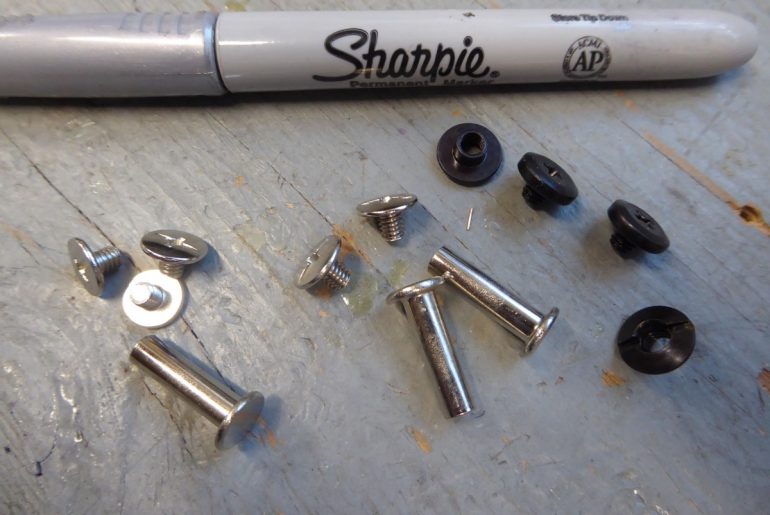
Screw rivets, i.e., chicago screws, the boot modder’s friend. The shiny ones are “Normal” chicago screws, the black are “Kydex” type.
I’ve been asked about this a million times. How to install those nice little D-ring leash attachment points some thoughtful boot makers might include on their shells, but are often in odd locations or downright missing? In the ancient and storied tradition of WildSnow dot com ski touring modposts, here we go:
The D-rings are somewhat difficult to source. I found quite a few options out of China, but they all had shipping dates in the three-week range. I found one option that shipped immediately. Here’s a link to the ‘Zon.
What about fasteners? In my strength testing, I found a threaded “chicago-screw” otherwise known as a “screw-rivet” to be plenty strong. In my opinion, it’s a better option than a compression rivet as the threaded type rivet is easily replaced if damaged in a fall (and easier to install).
But what length? In the case of Scarpa F1 LTs victimized for this blog post (they come with a D-ring, but I didn’t like the stock location on the upper part of the shell), the shell thickness where I installed the ring is 2.3 millimetres, while the shortest chicago-screw I could find has a female section of 5 mm. The D-ring tab is about 1.5 mm thick. Thus, the female barrel protruded from the shell about a millimetre. Solution: a tiny washer on the female barrel, to shorten the effective length. Here’s a link to a screw kit.
Another, likely better option than the regular chicago-screws linked above, are the Kydex type chicago-screws, used for belts, pistol holsters and the like. These appear to be stronger than the normal chicago-screw, and they’re shorter, thus more closely matching the often thinner shell dimension of ski touring boots, as opposed to alpine ski boots. They also have screw driver slots on both ends. (I ended up using the Kydex type fasteners for the install described here).
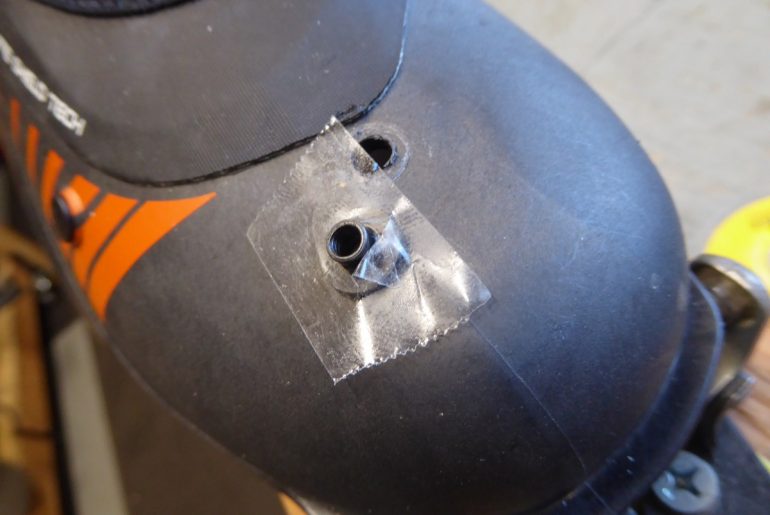
Before inserting chicago-screw from inside shell, apply a layer of double-sided tape, this holds the screw from dropping out of the hole, and adds resistance to rotation as you tighten.
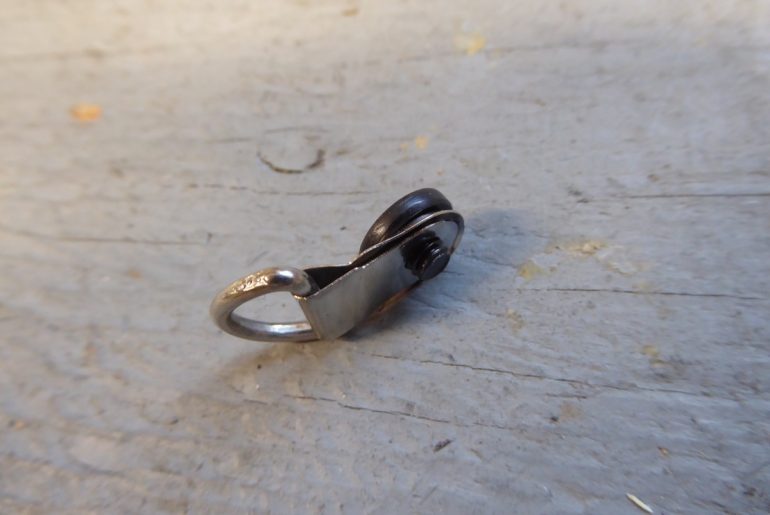
D-ring with chicago-screw, male side, ready to install. Don’t forget a drop of thread locker, or even a dab of epoxy. I use thread locker when I’m in a hurry, but prefer low-grade epoxy as it’s easily reversed by briefly heating the fastener with a soldering iron.
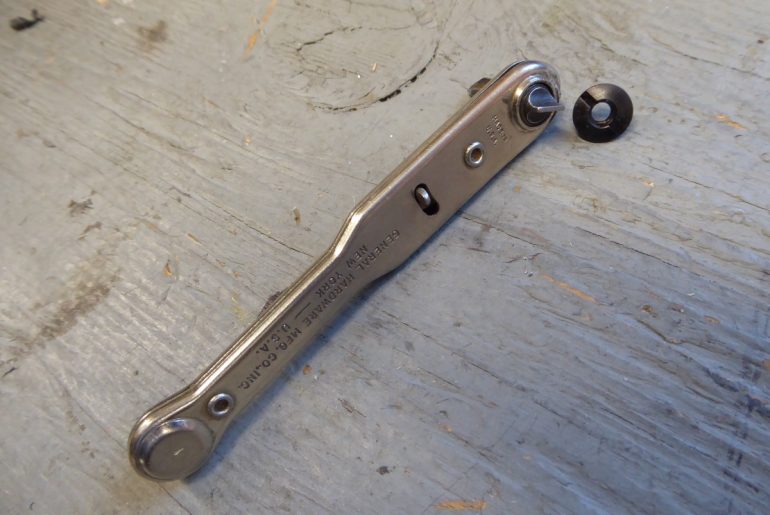
I used a small, right-angle screwdriver to hold the inside screw while I tightened from the outside.
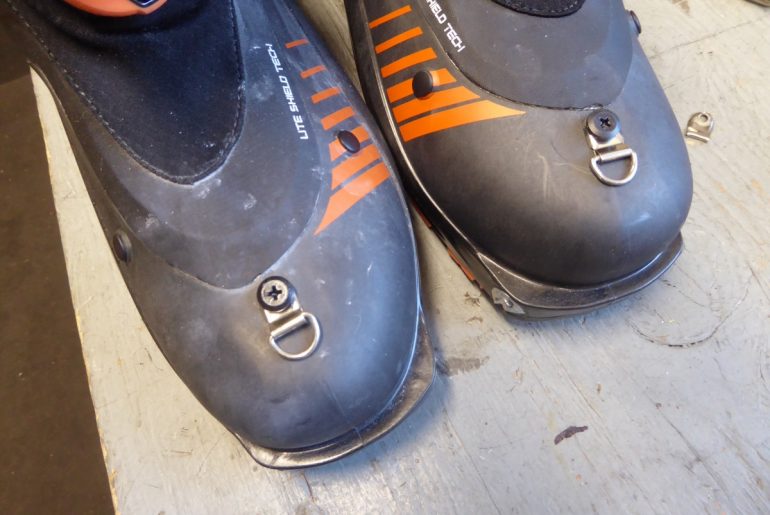
D-rings installed. I like them on the boot toe, but other locations will work so long as you avoid configurations causing the leash to interfere with skiing, or snag on vegetation (the main reason I don’t like leashes that drape from the boot like curtain strings).

I’m not a fan of how most leash clips fit with this sort of small D-ring. When loaded, an ill-fitting clip applies twisting, sideways force that can pop the ring open.
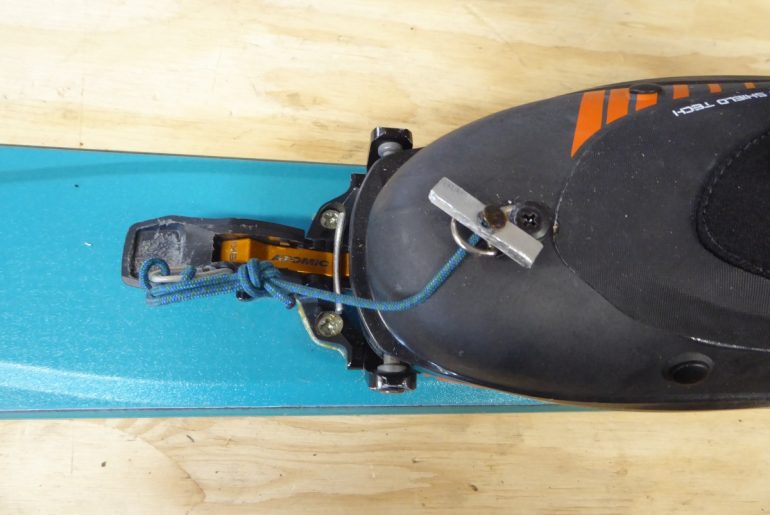
I prefer this sort of solution. Elegant compared to bulky clips and tow truck cables. The cord is tent guyline, it tests stronger than the D-ring. The tiny chunk of aluminum keys through the D-ring. Lots of ways to do something similar. For example, simply drill a tiny hole in the boot and do nothing more than back-knot a string that protrudes from the hole.
Here’s one blog post on the subject. And another.
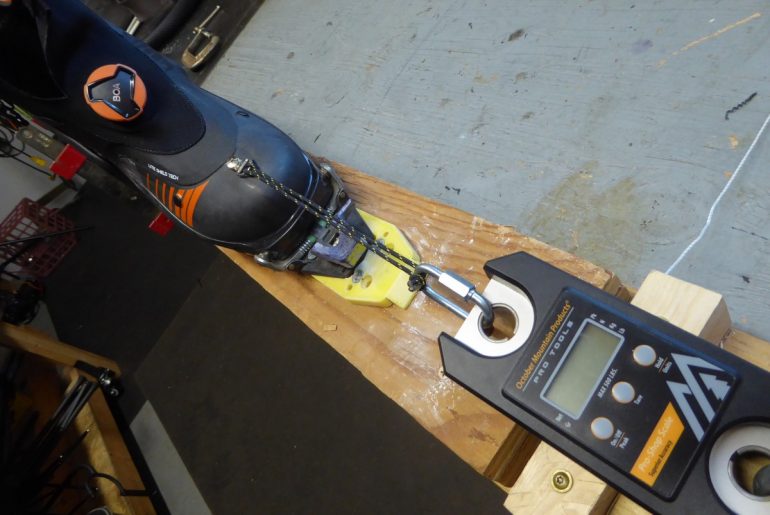
Strength testing, the ring pulled out of the tab at around 140 pounds. In my opinion that’s a good “fuse” strength, especially when combined with nylon cord that provides a bit of shock absorption. Nonetheless, leash strength as low as this might not be appropriate for a ski resort or other situations where ejecting a free-running ski is entirely unacceptable. Yes, to leash or not, and how strong, are worthy conversations. Should you feel so compelled, please use the comment section below.
.
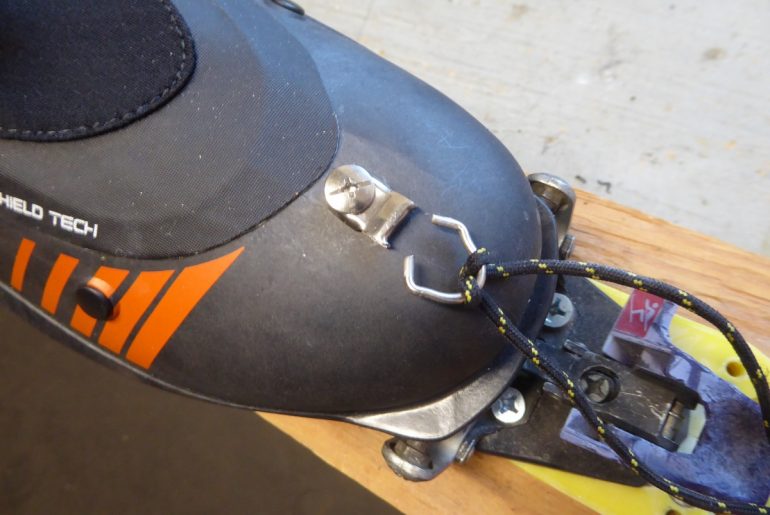
Failure mode is the ring spreading and pulling out of the tab. The chicago-screw and boot shell showed no deflection or damage. A differently angled pull could damage the screw I suppose, but it’s easy to replace.
Another safety note: Attaching the ski leash to the boot toe exerts a lot of leverage on your foot when the leash is employed. Consequently, it’s unwise to use this location for a super-strength “un-fused” leash. If you desire a bomber strength leash, use the type that loops around or otherwise attaches above the ankle joint, to avoid a twisted or broken ankle. More, note that leashes and avalanches don’t mix well. Consider using ski brakes if you play the avalanche game.
WildSnow.com publisher emeritus and founder Lou (Louis Dawson) has a 50+ years career in climbing, backcountry skiing and ski mountaineering. He was the first person in history to ski down all 54 Colorado 14,000-foot peaks, has authored numerous books about about backcountry skiing, and has skied from the summit of Denali in Alaska, North America’s highest mountain.

